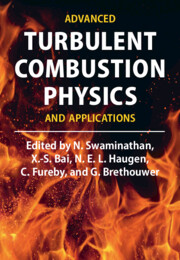90 results
Jet-induced vortices of a row of distributed engines at vertical take-off condition
-
- Journal:
- The Aeronautical Journal , First View
- Published online by Cambridge University Press:
- 12 February 2024, pp. 1-23
-
- Article
- Export citation
Music Deferred: A Reappraisal of the Legacy of Pierre Schaeffer's Treatise on Musical Objects (1966)
-
- Journal:
- Twentieth-Century Music / Volume 21 / Issue 1 / February 2024
- Published online by Cambridge University Press:
- 05 May 2023, pp. 110-131
-
- Article
-
- You have access
- Open access
- HTML
- Export citation
Acceleration of 60 MeV proton beams in the commissioning experiment of the SULF-10 PW laser
- Part of
-
- Journal:
- High Power Laser Science and Engineering / Volume 10 / 2022
- Published online by Cambridge University Press:
- 03 August 2022, e26
-
- Article
-
- You have access
- Open access
- HTML
- Export citation
Hyperemesis gravidarum severity, enteral tube feeding and cardiometabolic markers in offspring cord blood
-
- Journal:
- British Journal of Nutrition / Volume 128 / Issue 12 / 28 December 2022
- Published online by Cambridge University Press:
- 24 February 2022, pp. 2421-2431
- Print publication:
- 28 December 2022
-
- Article
-
- You have access
- Open access
- HTML
- Export citation
10 - Challenges in Practical Combustion
-
- Book:
- Advanced Turbulent Combustion Physics and Applications
- Published online:
- 09 December 2021
- Print publication:
- 06 January 2022, pp 396-459
-
- Chapter
- Export citation
4 - Non-premixed and Partially Premixed Combustion Modeling
-
-
- Book:
- Advanced Turbulent Combustion Physics and Applications
- Published online:
- 09 December 2021
- Print publication:
- 06 January 2022, pp 162-199
-
- Chapter
- Export citation
3 - Premixed Combustion Modeling
-
-
- Book:
- Advanced Turbulent Combustion Physics and Applications
- Published online:
- 09 December 2021
- Print publication:
- 06 January 2022, pp 100-161
-
- Chapter
- Export citation
Index
-
- Book:
- Advanced Turbulent Combustion Physics and Applications
- Published online:
- 09 December 2021
- Print publication:
- 06 January 2022, pp 464-470
-
- Chapter
- Export citation
Contents
-
- Book:
- Advanced Turbulent Combustion Physics and Applications
- Published online:
- 09 December 2021
- Print publication:
- 06 January 2022, pp v-x
-
- Chapter
- Export citation
Preface
-
- Book:
- Advanced Turbulent Combustion Physics and Applications
- Published online:
- 09 December 2021
- Print publication:
- 06 January 2022, pp xiii-xiv
-
- Chapter
- Export citation
List of Contributors
-
- Book:
- Advanced Turbulent Combustion Physics and Applications
- Published online:
- 09 December 2021
- Print publication:
- 06 January 2022, pp xi-xii
-
- Chapter
- Export citation
11 - Closing Remarks
-
-
- Book:
- Advanced Turbulent Combustion Physics and Applications
- Published online:
- 09 December 2021
- Print publication:
- 06 January 2022, pp 460-463
-
- Chapter
- Export citation
Frontmatter
-
- Book:
- Advanced Turbulent Combustion Physics and Applications
- Published online:
- 09 December 2021
- Print publication:
- 06 January 2022, pp i-iv
-
- Chapter
- Export citation

Advanced Turbulent Combustion Physics and Applications
-
- Published online:
- 09 December 2021
- Print publication:
- 06 January 2022
Associations of the pre-pregnancy weight status with anaemia and the erythropoiesis-related micronutrient status
-
- Journal:
- Public Health Nutrition / Volume 24 / Issue 18 / December 2021
- Published online by Cambridge University Press:
- 14 June 2021, pp. 6247-6257
-
- Article
-
- You have access
- HTML
- Export citation
Survival and predictors of deaths of patients hospitalised due to COVID-19 from a retrospective and multicentre cohort study in Brazil
-
- Journal:
- Epidemiology & Infection / Volume 148 / 2020
- Published online by Cambridge University Press:
- 07 September 2020, e198
-
- Article
-
- You have access
- Open access
- HTML
- Export citation
Energy acquisition of a small solar UAV using dynamic soaring
- Part of
-
- Journal:
- The Aeronautical Journal / Volume 125 / Issue 1283 / January 2021
- Published online by Cambridge University Press:
- 20 August 2020, pp. 60-86
-
- Article
- Export citation
Plasma-based proteomics reveals lipid metabolic and immunoregulatory dysregulation in post-stroke depression
-
- Journal:
- European Psychiatry / Volume 29 / Issue 5 / June 2014
- Published online by Cambridge University Press:
- 15 April 2020, pp. 307-315
-
- Article
- Export citation
Household wealth proxies for socio-economic inequality policy studies in China
-
- Journal:
- Data & Policy / Volume 2 / 2020
- Published online by Cambridge University Press:
- 30 March 2020, e1
-
- Article
-
- You have access
- Open access
- HTML
- Export citation
Nonlinear modulation of interacting between COMT and depression on brain function
-
- Journal:
- European Psychiatry / Volume 45 / September 2017
- Published online by Cambridge University Press:
- 23 March 2020, pp. 6-13
-
- Article
- Export citation






